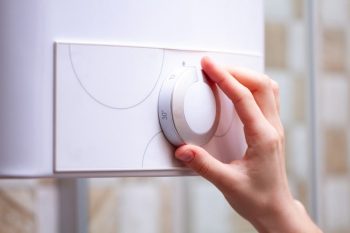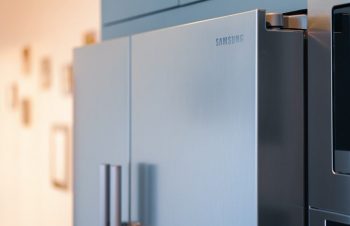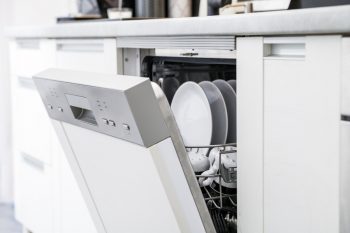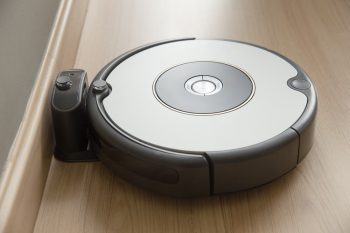
Is your Midea washer refusing to spin, leaving your laundry soaking wet and your head spinning with frustration? If so, you’re not alone.
There are several reasons why a washing machine may stop spinning, including issues with the lid switch, an unbalanced washing machine, or a malfunctioning control board.
Some of these issues can be resolved by making simple adjustments or repairs, while others require the help of a professional technician.
Understanding the root cause of the problem is crucial in determining the appropriate solution to get your Midea washer back to normal operation.
Here are some key takeaways to keep in mind if your Midea washer is not spinning:
- Various issues can cause a Midea washer to stop spinning, such as a malfunctioning lid switch, an unbalanced washing machine, a faulty drain pump, or a malfunctioning control board.
- Some of these issues can be fixed by making simple adjustments or repairs, while others require the help of a professional technician.
- Attempting to fix certain issues, such as a malfunctioning control board or faulty motor coupling, without proper knowledge and tools can be dangerous. It may cause further damage to the washer.
- Regular maintenance of your Midea washer can prevent issues from occurring in the first place, such as ensuring that the washer is level and the washing machine is not overloaded.
- When experiencing spinning issues with your Midea washer, check for simple solutions first, such as ensuring the lid is closed, and the load is balanced.
- If the issue persists, consult the Midea washer’s user manual for troubleshooting tips, or contact Midea customer support for further assistance.
- Consider seeking the help of a professional technician if you’re unsure about any aspect of the repair process or suspect a serious issue with your Midea washer.
- It’s important to diagnose and fix any issues with your Midea washer promptly to prevent further damage to the washer and ensure it functions properly for years to come.
- Always follow safety guidelines when handling your Midea washer and repair or maintenance tasks.
With these solutions and best practices, you can keep your Midea washer functioning optimally and ensure that it continues to serve your household’s laundry needs for years to come.
In this blog post, we’ll show you how to troubleshoot your Midea washer and identify the most likely causes of the issue.
We’ll also provide detailed instructions for fixing the problem, so you can get your washer back up and running as quickly as possible.
Reasons Why Your Midea Washer Is Not Spinning
If your Midea washer is not spinning, several possible causes range from simple and easy to fix to more complex and challenging.
Here are some of the most common reasons why your Midea washer might not be spinning, along with solutions for addressing the issue:
1. Malfunctioning Lid Switch

A malfunctioning lid switch is one of the most common causes of a Midea washer not spinning. The lid switch is a safety feature that prevents the washer from spinning if the lid is open.
If the lid switch is faulty or malfunctioning, the washer will not spin even if the lid is closed.
- Solution
To diagnose this issue, manually activate the lid switch by pressing it down with a screwdriver while the machine runs. If the machine starts to spin, the lid switch is likely the culprit.
To fix this issue, you may need to replace the lid switch. This is a relatively simple repair that anyone can do with some experience in appliance repair.
It’s important to address a malfunctioning lid switch as soon as possible, as it can compromise the machine’s safety and cause further damage to other components if left unaddressed.
2. Unbalanced Washing Machine

An unbalanced washing machine is another common cause of your Midea washer not spinning. If the load inside the washer is not evenly distributed, the machine will try to compensate by redistributing the clothes.
However, if the load is too unbalanced, the machine cannot spin properly and may stop spinning altogether.
- Solution
To address this issue, you can try redistributing a load of laundry inside the washer. For example, if the load is too heavy on one side, try moving some of the clothes to the other side to balance it out.
If an unbalanced load is a persistent issue, it could also be due to the washer feet being unlevel. Over time, the feet of the washer can become uneven, causing the machine to rock or shift during the spin cycle.
To fix this, adjust the feet of the washer until they are all level with the floor.
3. Overloaded Washer

Overloading your Midea washer can also cause it to stop spinning.
When you overload the washer, the machine’s motor has to work harder to agitate the clothes and spin the drum, which can cause the motor to overheat and shut off the spinning function.
- Solution
To Prevent overloading your washer, following the manufacturer’s guidelines for the maximum load size is important.
Overloading can also cause excessive wear and tear on other washer components, leading to further damage and repairs.
The solution is simple if you suspect your Midea washer is not spinning due to overloading. First, remove some of the clothes and run the spin cycle again.
4. Drive Belt Issues

The drive belt is responsible for turning the drum, so if it’s damaged or broken, the washer won’t be able to spin.
Over time, the drive belt can become worn, stretched, or even break due to regular use or excessive tension.
- Solution
To inspect the drive belt, first unplug the washer and remove the machine’s back panel to access the belt.
Look for any visible signs of damage, such as cracks, fraying, or stretching. If you see any damage, the belt needs to be replaced.
Next, check the tension of the belt. The belt should feel tight when pressed with your finger. If the belt feels loose, it may need to be tightened or replaced.
If the belt looks fine and feels tight, check the alignment of the belt on the pulley. Make sure the belt is properly positioned and not slipping off the pulley.
Suppose you’re unsure about diagnosing or fixing the issue with your Midea washer’s drive belt. In that case, it’s best to call a professional technician to diagnose and fix the issue safely and effectively.
When replacing the drive belt, refer to your washer’s user manual for guidance on the appropriate type and size of the belt for your specific model.
5. Clogged or Faulty Drain Pump

The drain pump removes water from the washer during the spin cycle. If the pump is clogged with debris or is faulty, it can prevent the washer from draining properly and cause it to stop spinning.
- Solution
To check if the drain pump is causing the issue, unplug the washer from its power source.
Next, locate the drain pump at the bottom of the washer. Inspect the pump for any visible signs of damage or clogs, such as debris or foreign objects stuck in the pump.
If the pump is clogged, you can remove the debris using a pair of pliers or a small brush. If the pump appears in good condition but still isn’t working, it may not be accurate and must be replaced.
In this case, it’s best to call a professional appliance repair technician to diagnose and fix the issue. Attempting to repair the washer yourself can be dangerous and cause further damage to the machine.
6. Faulty Motor Coupling

A faulty motor coupling is another issue that can cause a Midea washer not to spin.
The motor coupling is a small plastic and rubber component designed to transfer power from the motor to the transmission and is essential for the washer’s spinning function.
Over time, the motor coupling can wear out or break due to regular use. When this happens, the motor will continue to run, but the transmission won’t engage, which can prevent the washer from spinning.
Sometimes, the washer makes strange noises during the wash or spin cycle.
- Solution
Suppose you suspect that your Midea washer’s motor coupling is faulty. In that case, it’s important to seek the help of a professional technician who can diagnose and fix the issue safely and effectively.
The technician will replace the old, worn-out coupling with a new one and ensure the washer functions properly.
Remember, a faulty motor coupling is not a problem you should ignore or attempt to fix alone.
Seek professional help to ensure your washer works correctly and avoid potential safety hazards.
7. Malfunctioning Control Board

A malfunctioning control board is one of the most serious issues that can cause a Midea washer not to spin.
The control board is essentially the brain of the washer, controlling all of its functions and settings. If it malfunctions, it can cause the washer to stop spinning or spin erratically.
The control board can malfunction for various reasons, including power surges, damage from water or moisture, and wear and tear over time.
Unfortunately, fixing a malfunctioning control board can be difficult and may require the help of a professional technician.
- Solution
If you suspect that the control board is the cause of your Midea washer not spinning, you can do a few things to test it.
First, ensure the washer is properly plugged in and the circuit breaker is not tripped.
Next, use a multimeter to test the control board for continuity and voltage. If the control board is not getting the proper voltage, it may need to be replaced.
It’s important to note that attempting to repair a control board yourself can be dangerous and may cause further damage to the washer.
If you are unsure about any aspect of the repair process, it’s best to consult a professional technician who can diagnose and fix the issue safely and effectively.
Conclusion
A Midea washer not spinning, can be a frustrating issue, but it’s important to understand that various factors could be causing the problem, ranging from minor to more serious.
Common causes include a malfunctioning lid switch, an unbalanced or overloaded machine, worn belts, a clogged drain pump, and faulty motor couplings.
Fortunately, most of these issues can be easily fixed with basic tools and a little know-how.
Following the steps outlined in this article, you can diagnose and repair many of the most common causes of a Midea washer not spinning, saving you time, money, and hassle in the long run.
Remember always to exercise caution when working with electrical appliances, as they can be dangerous if mishandled.












